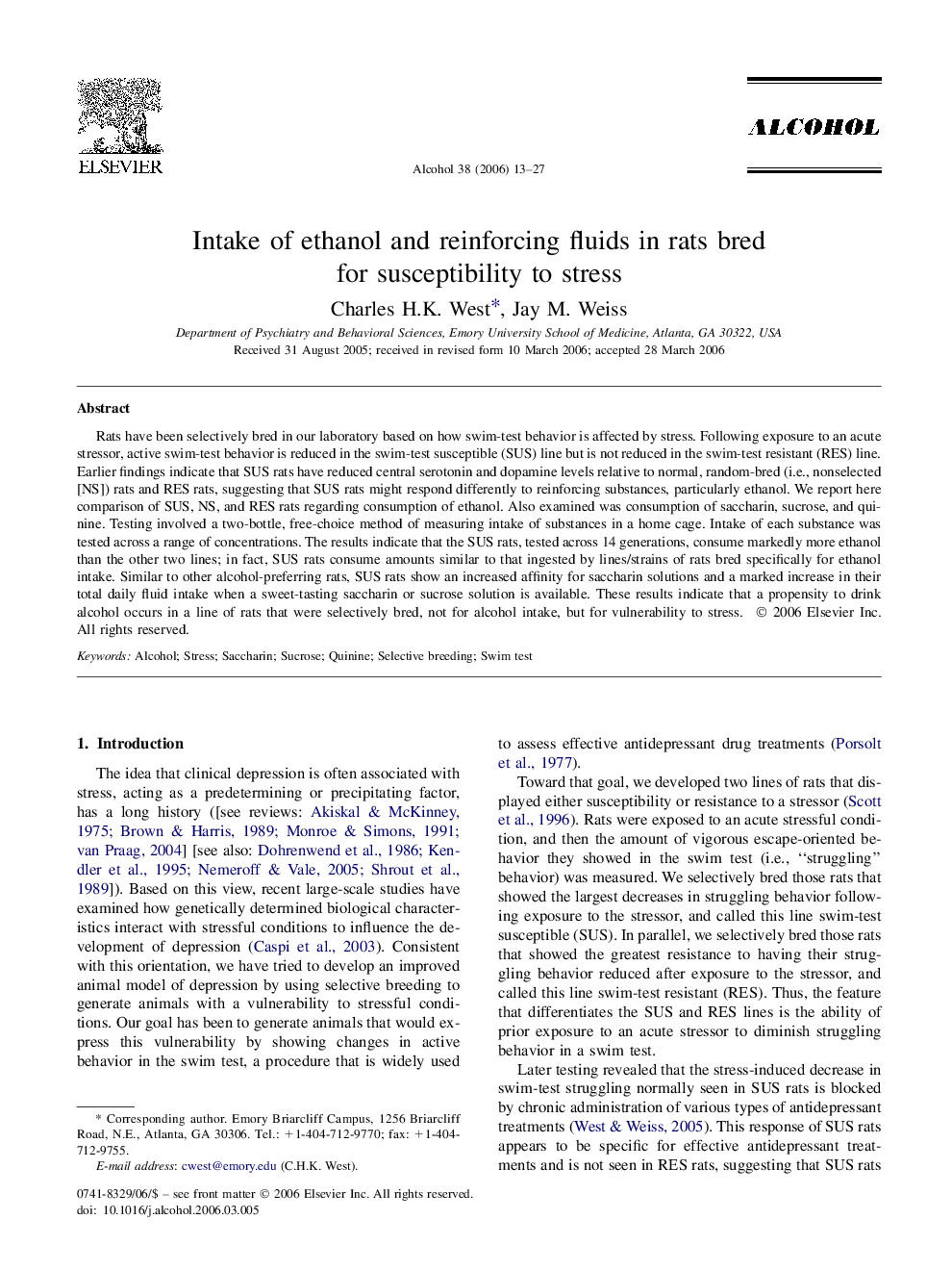| Article ID | Journal | Published Year | Pages | File Type |
|---|---|---|---|---|
| 1067704 | Alcohol | 2006 | 15 Pages |
Rats have been selectively bred in our laboratory based on how swim-test behavior is affected by stress. Following exposure to an acute stressor, active swim-test behavior is reduced in the swim-test susceptible (SUS) line but is not reduced in the swim-test resistant (RES) line. Earlier findings indicate that SUS rats have reduced central serotonin and dopamine levels relative to normal, random-bred (i.e., nonselected [NS]) rats and RES rats, suggesting that SUS rats might respond differently to reinforcing substances, particularly ethanol. We report here comparison of SUS, NS, and RES rats regarding consumption of ethanol. Also examined was consumption of saccharin, sucrose, and quinine. Testing involved a two-bottle, free-choice method of measuring intake of substances in a home cage. Intake of each substance was tested across a range of concentrations. The results indicate that the SUS rats, tested across 14 generations, consume markedly more ethanol than the other two lines; in fact, SUS rats consume amounts similar to that ingested by lines/strains of rats bred specifically for ethanol intake. Similar to other alcohol-preferring rats, SUS rats show an increased affinity for saccharin solutions and a marked increase in their total daily fluid intake when a sweet-tasting saccharin or sucrose solution is available. These results indicate that a propensity to drink alcohol occurs in a line of rats that were selectively bred, not for alcohol intake, but for vulnerability to stress.
